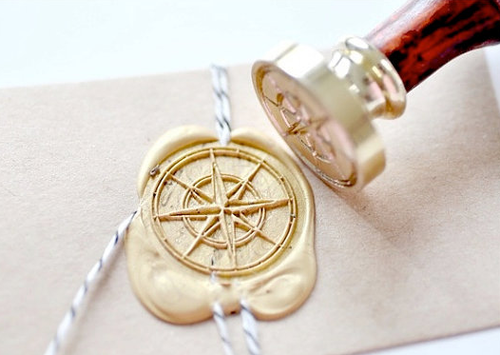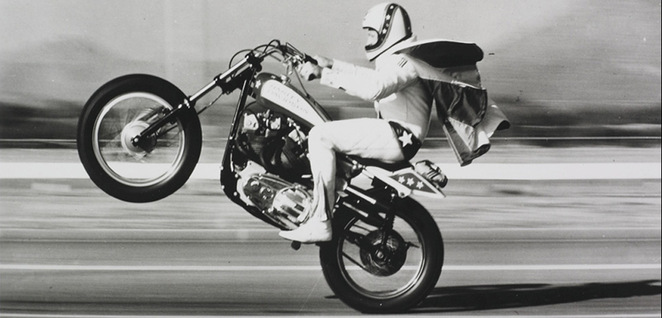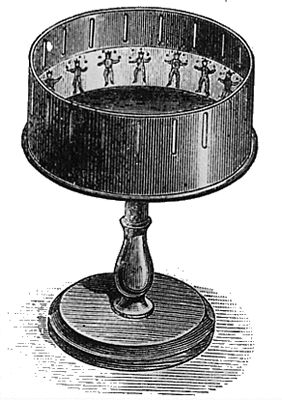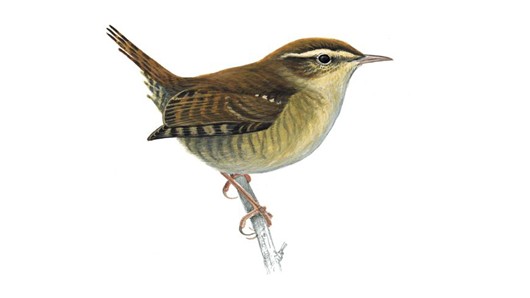The current manga style, with all those particular facial expressions and big eyes, was created in 1947 by Osamu Tezuka, with the story Shin Takarajima ("The New Treasure Island"), but the origins of this type of comic book go back to the illustrations and caricatures about the Japanese culture made from the year 1814 on, which were called hokusai manga.
I'm not overly excited by Japanese Mangas, but I've been collecting the Claymore series for a couple of years, and still like it very much. But I only stopped to wonder how mangas were invented today, so here is some info about that... The current manga style, with all those particular facial expressions and big eyes, was created in 1947 by Osamu Tezuka, with the story Shin Takarajima ("The New Treasure Island"), but the origins of this type of comic book go back to the illustrations and caricatures about the Japanese culture made from the year 1814 on, which were called hokusai manga. ~Ally
0 Comments
I'm a big fan of wand written letters and vintage things, and can't imagine a better couple than letters with was seals! I'm still working on the design of my signet, so I won't be able to show it here (and I don't want any busters copying my design! ;) ), but I'll teach you how to get the wax in a few simple steps. A couple of websites I consulted suggested the mix of shellac, Venice turpentine and pigments to make the wax, but you can actually buy some ready-to-use seal wax in specialized stores. Some of them even sell wax with wicks, so you don't make a big mess lighting the wax stick. If you're old school, though, go for the mix and tell me how it was! If you think about it, the possibility of creating a personal wax collor is also pretty cool. After getting you wax ready, you just burn it on top of the envelope or paper you wish to decorate and, before the wax gets cold, press your signet on top of it and remove it gently. A couple of attempts might be necessary to get everything right, but practice makes the master! ~Ally
Next time you get dizzy and fall on your butt, blame it on your ears! Our sense of balance seems to depend on them and on a substance called endolymph, which lies inside our ears' cannals. When we spin, the endolymph accompanies the movement but, when we stop, it doesn't stop immediately. This causes a stimuli that generates the impression that we are still spinning, so we get dizzy for a while and, after a few moments, the endolymph gets back to normal and the dizziness goes away. ~Ally
American movies and tv shows seem to make references to Evel Knievel everytime a character jumps. So that got me wondering: who the heck was that guy?! Apparently, mr.Knievel was a North American stuntman motorcyclist made famous by his automobile tricks, specially jumps over cars and even lions (!), between the 60's and 80's. He was also known for having broken more than 40 bones of his body. Curiously, all his records were beaten by his son Robbie, who became known as Evel Knievel II. ~Ally
Scientists believe it has emerged in Europe more than 10 thousand years ago when humans had to cross frozen lakes in the icy winter. Archaeological findings confirm that animal’s bones were used as ice skates in places like Germany, Russia, Sweden, Scandinavia and Great Britain. Back then, the bones were tied under the feet by leather strings. The Dutch invented the metal blades to replace the bones in the 13th and 14th centuries, coupled to the shoes that were used in that time. ~Ally
When I was younger, I was always a little afraid of my cousins' St.Bernard dogs. They were big, clumsy, used to drool a lot and were a little bit too eager to play with me (I was a chicken, I know, but they were a little menacing for me. I only learned to really appreciate dogs a couple of years later). Nevertheless, I remember imagining them using those tiny barrels in rescue missions in the Alps... But now I know this wasn't the case. St. Bernard is an ancient dog breed, going back to the time the Romans got to the Alps; formed by the crossbreed of Roman Molossos dogs. However, who garanteed the breed's survival were the monks from Hospice du Grand St. Bernard, a monastery located in one of the highest spots of the mountains, an obligatory stop for travellers crossing the Alps. They adopted the dogs in 1660, according to historians, first using them as property guards. The first rescue mission the St. Bernards participated as helpers, though, only happened in the XVIII century and, from that point on, the monks trained the dogs to continue saving and rescuing people in the mountains. They could find submerged victims and even go back to the monastery to ask for help when the monk who accompanied the dog (called a "marronier") or the victim couldn't walk through the mountains anymore. Although many images represent these "Alps' Angels" with kegs in their necks, such adornment was never used in rescue missions. According to some texts, the rescue strategy used by the St. Bernards involved up to 4 dogs simultaneously: when the victim was found (thanks to their powerful sense of scent), two dogs laid side by side with the person to keep him/her warm. A third dog would lick the person's face, trying to reanimate him/her and a fourth dog would return to the monastery to seek for help. Apparently, such such rescue strategy really worked: a St. Bernard dog named Barry became famous for rescuing more than 40 people during his life! ~Ally
Researchers believe it arose from a ritual practiced in Angola (Africa), called "Zebra Dance". Brought to Brazil by the bantus in the slavery period, in the beginning it worked only as a demonstration of hability. With time, Capoeira turned into a game of atack and defense and its practice was forbidden. Nowadays, it is considered a martial art practiced without violence, as a game of skill. ~Ally
I remember seeing one of these in a scary scene from the movie "The Woman in Black", but only thought of researching a little more about it this week. The zoetrope is a device that produces the illusion of motion from a rapid succession of static pictures. Its name means "the weel of life". It consists of a cylinder with slits cut vertically in the sides. On the inner surface of the cylinder is a band with images from a set of sequenced pictures. As the cylinder spins, the user looks through the slits at the pictures across. The scanning of the slits keeps the pictures from simply blurring together, and the user sees a rapid succession of images, producing the illusion of motion. The earliest known zoetrope was created in China around 180 AD by the inventor Ting Huan, and was driven by convection. The modern one, however, was only invented in 1833 by British mathematician William George Horner, who called it the "daedalum" (most likely as a reference to the Greek myth of Daedalus), though it was popularly referred to as "the wheel of the devil". It failed to become popular until the 1860s, when it was patented by both English and American makers, including Milton Bradley. The American developer William F. Lincoln named his toy the "zoetrope". Almost simultaneously, similar inventions were made independently in Belgium by Joseph Antoine Ferdinand Plateau (the phenakistoscope) and in Austria by Simon von Stampfer (the stroboscope). Nowadays, some marketing companies invest in 3D zoetropes, which often use several tiny figures to create the illusion of movement, through a spinning mechanism and the use of the concept of “persistence of vision", like the ancient devices. ~Ally
And this one reminds me of a Pokémon (Vileplume, anyone?)! The Rafflesia arnoldi, is known as Monster Flower (a free Portuguese translation) and also as Corpse Flower. Like the another Corpse Flower I spoke about, the R. arnoldi smells like rotting flesh. It is the largest flower in the world and can grow to massive proportions, with a flower diameter of up to one meter and weights up to 11 kilograms! Although it has no leaves, stems or roots that the eye can see, the monster flower is considered a plant and relies on its strong perfume to attract insects for pollination. It also has parasitic tendencies: living off the water and nutrients from the hapless Tetrastigma vine, the monster flower is able to grow as large as it does. Found only in the dwindling rainforests of Sumatra and Borneo, pollination rarely occurs and the bud death rate is high (at about 80-90%). The few buds that actually bloom take many months to do so, and when they do they last no more than a few days before dying. There are great conservation efforts in place to protect the habitat of the Rafflesia species so future generations can experience the sight and smell of the largest flower on Earth. ~Ally
While I read about the Firecrest bird, I also read a little bit about the King of the Birds story. Some claim the alledged king in this Grimm's story is the Firecrest, others say it is the Wren. Both are very small birds and might have inspired storytellers to create this tale. I'll leave it up to you! And here is the version I read.. "One day the birds took it into their heads that they would like a master, and that one of their number must be chosen king. A meeting of all the birds was called, and on a beautiful May morning they assembled from woods and fields and meadows. The eagle, the robin, the bluebird, the owl, the lark, the sparrow were all there. The cuckoo came, and the lapwing, and so did all the other birds, too numerous to mention. There also came a very little bird that had no name at all. There was great confusion and noise. There was piping, hissing, chattering and clacking, and finally it was decided that the bird that could fly the highest should be king. The signal was given and all the birds flew in a great flock into the air. There was a loud rustling and whirring and beating of wings. The air was full of dust, and it seemed as if a black cloud were floating over the field. The little birds soon grew tired and fell back quickly to earth. The larger ones held out longer, and flew higher and higher, but the eagle flew highest of any. He rose, and rose, until he seemed to be flying straight into the sun. The other birds gave out and one by one they fell back to earth - and when the eagle saw this he thought, 'What is the use of flying any higher? It is settled - I am king!' Then the birds below called in one voice, 'Come back, come back! You must be our king! No one can fly as high as you.' 'Except me!' cried a shrill, shrill voice, and the little bird without a name rose from the eagle's back, where he had lain hidden in the feathers, and he flew into the air. Higher and higher he mounted till he was lost to sight, then, folding his wings together, he sank to earth crying shrilly, 'I am king! I am king!' 'You, our king!' the birds cried in anger. 'you have done this by trickery and cunning. We will not have you to reign over us.' Then the birds gathered together again and made another condition, that he should be king who could go the deepest into the earth. How the goose wallowed in the sand, and the duck strove to dig a hole! All the other birds, too, tried to hide themselves in the ground. The little bird without a name found a mouse's hole, and creeping in cried - 'I am king! I am king!' 'You, our king!' all the birds cried again, more angrily than before. 'Do you think that we would reward your cunning in this way? No, no! You shall stay in the earth till you die of hunger!' So they shut up the little bird in the mouse's hole, and bade the owl watch him carefully night and day. Then all the birds went home to bed, for they were very tired - but the owl found it lonely and wearisome sitting alone staring at the mouse's hole. 'I can close one eye and watch with the other,' he thought. So he closed one eye and stared steadfastly with the other - but before he knew it he forgot to keep that one open, and both eyes were fast asleep. Then the little bird without a name peeped out, and when he saw Master Owl's two eyes tight shut, he slipped from the hole and flew away. From this time on the owl has not dared to show himself by day lest the birds should pull him to pieces. He flies about only at night-time, hating and pursuing the mouse for having made the hole into which the little bird crept. And the little bird also keeps out of sight, for he fears lest the other birds should punish him for his cunning. He hides in the hedges, and when he thinks himself quite safe, he sings out, 'I am king! I am king!' And the other birds in mockery call out, 'Yes, yes, the hedge-king! the hedge-king!' " ~Ally
|










 RSS Feed
RSS Feed